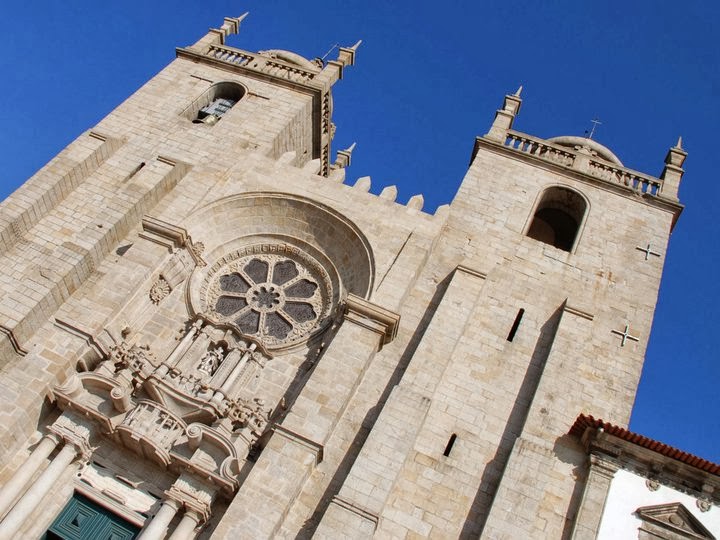I left Vietnam in mid-August and set about looking for work in Europe again and, more specifically, Spain. But instead, I landed a job in Portugal. I flew to Porto ahead of the contract and spent five days just soaking up everything the city had to offer...
Located along the Douro river estuary in the northwest of the country, Porto is Portugal's second-largest city. Though occupation of the area can be traced back to 275 BC and the time of the Celts, Porto as we know it today dates from the 4th century when it was known as Portus Cale under the Romans. In 711 AD, the city fell into the hands of the Moors, who remained there until 868 when King Afonso III of Asturias (r. 866-910) sent a vassal to reclaim it. Portus Cale was later referred to as Portucale, which is the origin for the modern name of Portugal.
The first thing visitors to Porto will see is the city's UNESCO World Heritage protected ribeira (riverfront), which marks the edge of the historic centre. To get the best views, you need to cross the river to Vila Nova de Gaia. I did just that and found it hard to tear myself away...
 |
| View of Porto from across the River Douro |
 |
| Boats on the River Douro |
 |
| Kitten looking over the river |
The cathedral, Sé do Porto, is not just one of the city's oldest monuments but also one of the most important Romanesque buildings in the country. Built in 1110 under the patronage of Bishop Hugo, it was completed in the 13th century.
In 1387, it saw the marriage of King João I of Portugal (r. 1385-1433) and the English princess, Philippa of Lancaster (daughter of John of Gaunt, 1st Duke of Lancaster, and sister of King Henry IV). At the same time, the Anglo-Portuguese alliance – originally signed in 1373 between King Edward III of England and King Ferdinand and Queen Eleanor of Portugal – was renewed with the Treaty of Windsor, which is the oldest diplomatic alliance in the world that is still in force today.
 |
| The cathedral |
 |
| The façade |
Portugal's second city it may be, but I was surprised and pleased to discover that Porto is anything but city-like. A stone's throw from the cathedral, I came across a curious arrangement of brightly-coloured pots in the street. Seeing something so 'country' made me smile, and of course I had to stop and get a picture.
 |
| In lieu of a front garden |
One of my favourite sights was that of Câmara Municipal do Porto (City Hall). Built in 1920, it's made of granite and marble and its design was influenced by municipal architecture of Flanders and France. In keeping with its grandeur, it's located in the heart of the city on the imposing Avenida dos Aliados, a sloping boulevard lined with palatial buildings, most of which are hotels or main branches of the country's major banks.
 |
| City Hall |
 |
| Close-up of the 70 metre-high clock tower |
Another landmark is Torre dos Clérigos, the bell-tower of the Igreja dos Clérigos (Church of the Clergymen) and one of the city's most iconic sights, especially if you can catch the tram going by. Built by an Italian architect, construction began in 1732 and was completed around 1750. The 75.6m-high tower was a later addition, which was built between 1754 and 1763. Not far from the tower is Casa Oriental, the most-photographed shop in the city.
 |
| Statue of António Ferreira Gomes, Bishop of Porto (1952-1982) with Torre dos Clérigos in the background |
 |
| Torre dos Clérigos with an iconic Porto tram |
 |
| Helping it to remain the most-photographed shop in the city |
 |
| Close-up of produce |
This next photo is a pretty poor shot, but I just LOVE the story behind it. On the left is Igreja das Carmelitas. Part of a former 17th century convent, it has a simple, classical façade and a bell tower. On the right is Igreja do Carmo, a Baroque creation dating from the 18th century. The law at the time stipulated that no two churches could share a wall (in this case to hinder amorous liaisons between Carmelitas nuns and the Carmo monks) so a house was built between them. At barely 1 metre wide, it is the narrowest house in Portugal, and was actually inhabited until the 1980s! I can't imagine how claustrophobic that must have been!
 |
| Officially the narrowest house in Portugal |
There is far more to see in Porto than the few things I have picked out but, having lived nearby for almost a year, only my very favourites could make the cut. However, no whistlestop tour would be complete without a (slightly blurry) night shot taken on the ribeira with the iconic Ponte Dom Luis I in the background. Looking at these photos, I can't help but feel nostalgic for my first proper home abroad...
 |
| View of Vila Nova de Gaia taken from the Ribeira |
No comments:
Post a Comment